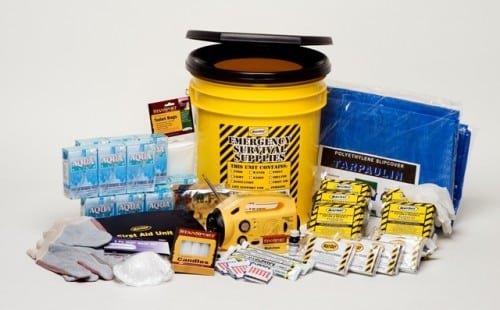As over 7 million people found out during the massive Southwest power outage of 2011, emergencies do happen—and they happen when least expected. The blackout— triggered in the afternoon of September 9th when a high voltage power line between Arizona and California was inadvertently tripped out of service—caused chaos and confusion in homes, office buildings, and freeways where traffic was brought to a standstill for hours. With restaurants and grocery stores experiencing large losses due to spoiled foods, and several residential areas forced to use only boiled or bottled water for several days after, the outage served as a valuable wake-up call for millions who were caught unprepared. What follows is a list of 5 critical emergency preparedness lessons learned in the 2011 blackout, in the hope that we’ll all be better prepared—not if, but when the next emergency occurs.
-
Keep a stash of cash on hand:
Not surprisingly, when power shut down on that hot summer afternoon, the hot commodity at local grocery stores was ice. While many stores stayed open as long as they could to accommodate customers and sell products destined to perish without refrigeration, the lack of power rendered cash registers, point of sale credit card machines, and on site ATM’s useless. As a result, those customers who were short on cash were unable to make needed purchases. The lesson here is that, along with storing emergency preparedness supplies, it’s wise to keep some cash on hand for making emergency purchases. Make sure that your cash stash is in small denominations due to the inability or unwillingness of merchants to make change for large bills during an emergency.
-
Keep an eye on the gas gauge:
As car after car ran out of gas on gridlocked freeways, stranded commuters learned a painful lesson: keep the gas tank at least half full at all times. As an added benefit, this practice is actually good for your car’s engine, as it can keep sludge from clogging fuel lines and reduce internal friction. In addition, letting a car’s engine idle for extended periods of time is another practice motorists should avoid. Although an idling engine may help drivers trapped in truly stopped traffic to sustain the hopeful notion that that will be moving again soon, the reality is that they’re only wasting the gas they will need to make it safely home. And speaking of home, having a car in the driveway with at least a half tank of gas will give you extra piece of mind, knowing that you have a dependable means of transportation should you need it.
-
Keep emergency lighting on hand:
If you’ve experienced a power outage while at home, you know that what seems to be a minor inconvenience can become a major concern after sundown—especially if you have a limited supply of alternative light sources on hand. From light sticks to flashlights to battery powered lanterns, there are many very effective products to illuminate your home during a blackout. The key is to make sure you have an adequate supply of fresh batteries to power them. Many lighting products come with hand crank generators, eliminating the need for batteries altogether.
-
Keep your cellphone charged:
The ability to reach and stay in contact with others during an emergency is critical, especially for those who may require medical attention. And cellphones played a major role in keeping the Big Southwest Blackout from having more serious consequences. Being that a cellphone only works when the battery is charged, the ability to maintain a charged phone during an emergency is critical. Along with routine charging, you should always keep a portable plug-in charger in your car. However, being that these charges are dependent on your car’s battery, a hand-crank phone charger is an even better way to go. These chargers can also be used to manually charge other techno-gadgets that could prove helpful during an emergency, such as web-enabled tablet computers.
-
Keep your cool:
The word “cool” conjures up images of water, and those who were prepared by making it a practice to keep bottled water in their cars fared much better during the blackout than those who didn’t. And stories of prepared people sharing water with others stranded on the freeways were not uncommon. Therein lies perhaps the biggest lesson of the Big Southwest Blackout. The lesson that when you make emergency preparedness a priority in your life—if and when an emergency occurs—by keeping a cool head, you stand a better chance of being a part of the solution, and a help not a hindrance to yourself and others.
Stan Aldridge is a freelance writer for Prepare Wise. Prepare Wise offers long term food storage supplies on their website.
















